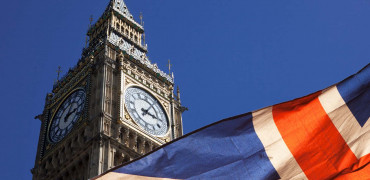Children are particularly vulnerable to poor air quality and, as the arguments continue to rage about when they can all safely return to school, there are real concerns that some will be better protected than others.
Throughout the pandemic, lower-income households have been more likely to fall into debt, whilst wealthier families have been able to fall back on, or even boost their savings.
For school children, a similar story is unfolding as there are growing concerns that millions are falling behind during this period of online teaching - particularly those in state education.
Research from University College London has shone a light on a huge gap in provision between pupils in private and state education. Whilst 31% of private schools have been providing 4 or more daily lessons, this is true for just 6% of state schools.
A digital divide was also highlighted. Whereas 97% of private school children had access to a computer at home, 1 in 5 children on free school meals had no access at all.
But this divide in ability to provide resources and online teaching is just the tip of the iceberg.
As the conversation around when children will be able to return to school increases, we need to ask ourselves about the type of environment they'll be returning to.
Particularly, whether sending our children back to underfunded schools without the ability to invest in providing a healthy environment is just another example of the UK wealth gap.
We are just beginning to understand the possible disadvantage state school children are facing
The effects of air pollution on children
Children are particularly vulnerable to poor air quality. Breathing is more rapid in children up to 12 years of age, whilst evidence suggests that lung development continues until the teenage years. This puts both primary and secondary school children at greater risk of the consequences of air pollution.
According to the World Health Organisation (WHO), air pollution can impact neurodevelopment and trigger asthma in our children. There is also emerging evidence to suggest that air pollution can stunt the growth of children's lungs, creating a susceptibility to lung infections as they grow older.
On top of this it has been found that children who are exposed to high levels of dirty air at age 12, are more likely to develop major depression at age 18. As the brain isn’t fully developed until age 25, air pollution poses a real danger for both children and adolescents.
As well as health implications, exposure to air pollution can negatively impact on mental ability. Research has found that reducing air pollution levels by 20% could improve children's ability to learn by one month per year. Other studies have noted that outdoor air pollution present in classrooms is linked to a decline in academic performance in addition to headaches, dizziness, lack of concentration and behavioural issues.
As children spend roughly 25% of their time at school, mitigating air pollution exposure in these locations has to be a priority.
The air quality divide within education
Schools have been encouraged to adopt many protective measures against air pollution.
Hedges and greenery along the boundaries between the premises and adjacent roads, preventing cars from 'idling' outside of the school and using adequate mechanical ventilation and filtration systems in classrooms are just a selection of proposed changes.
Independent schools have an advantage with the amount of green space they often own compared to state schools. Harrow school, for example, has 300 acres - bigger than east London's Victoria Park - which helps protect students from severe air pollution.
But aside from this, there are numerous examples of private schools and nurseries investing in air quality measures.
Notting Hill Preparatory has invested tens of thousands of pounds installing high-performance air filtration systems in their classrooms, reducing particulate pollution by 86%. This is on top of their investment in greenery to act as a pollution barrier between the busy main road they are situated on.
Others, such as Saint Christina's School and N Family Club have opted to install living walls to boost air regulation and create healthier outdoor spaces as part of their air pollution mitigation, with N Family Club also investing in the latest air cleaning technology for classrooms.
On the other hand, research has highlighted that London's most deprived children are likely to attend schools who are worst affected by air pollution. In fact, 85% of schools worst affected had a large number of students from catchment areas that are more deprived than the London average.
This poses the question of whether these children are further disadvantaged by the fact that their schools don't have adequate funding to install the same kind of air pollution mitigation measures as their independent counterparts.
England's state schools have been suffering the worst decline in funding since the 1980s and often struggle to provide even the essentials, including adequate infrastructure, books and full curriculums. Put simply, not all schools have a budget for better air quality.
Clean Air Audit
London's mayor, Sadiq Khan audited 50 primary schools located in the city's most polluted areas - this was later extended to 20 nurseries across the capital.
On top of recommendations to reduce emissions and exposure to pollution, each state school was given £10,000 for immediate air pollution reduction measures. In addition, schools in any area exceeding legal pollution limits can now access a fund to deliver similar greening measures.
Although this is a welcome scheme it is worth pointing out that £10,000 was enough for Notting Hill Preparatory to invest in two air filters. But with nine classrooms being fitted with the technology, their total amount greatly exceeds the grant sum.
Investing in greenery to help combat outside air pollution would help the grant stretch further in the fight against air pollution. But unfortunately for state schools without the additional funds to continue investing throughout their buildings, the grant is unlikely to even touch the sides.
An area for research
Despite the potential ramifications the air quality wealth gap might pose for millions of state-educated children, there is little to no research on the topic.
This is a matter of priority if we are to ensure that all children have access to a learning environment that is conducive to health and ability to learn.
Conclusion
A substantial investment is needed for schools to protect their students from the plight of air pollution and we are just now beginning to understand the possible disadvantage state school children are facing.
Private school spending per child is at least three times that of state schools, and fee-paying parents expect schools to tackle the issue of air pollution. This has allowed for greater leaps in terms of indoor air quality technology and outdoor mitigation measures.
Conversely, state schools have endured 13 years of "a big squeeze on budgets". With the larger class sizes and reduced spending on books and equipment that this has created, it is unsurprising that there is no money to spare on improved air quality for students.
But like their right to an education, children also have a right to a level playing field where they aren’t further disadvantaged by air quality on top of digital and fiscal divides. Being state or privately-educated doesn't change this right.
This issue has received little coverage and minimal research, yet is hugely important and must be a concern for us all.
Nathan Wood is managing director of Farmwood M&E. He is also leading a project on behalf of BESA to develop low cost indoor air quality solutions that can be implemented by ALL schools.



